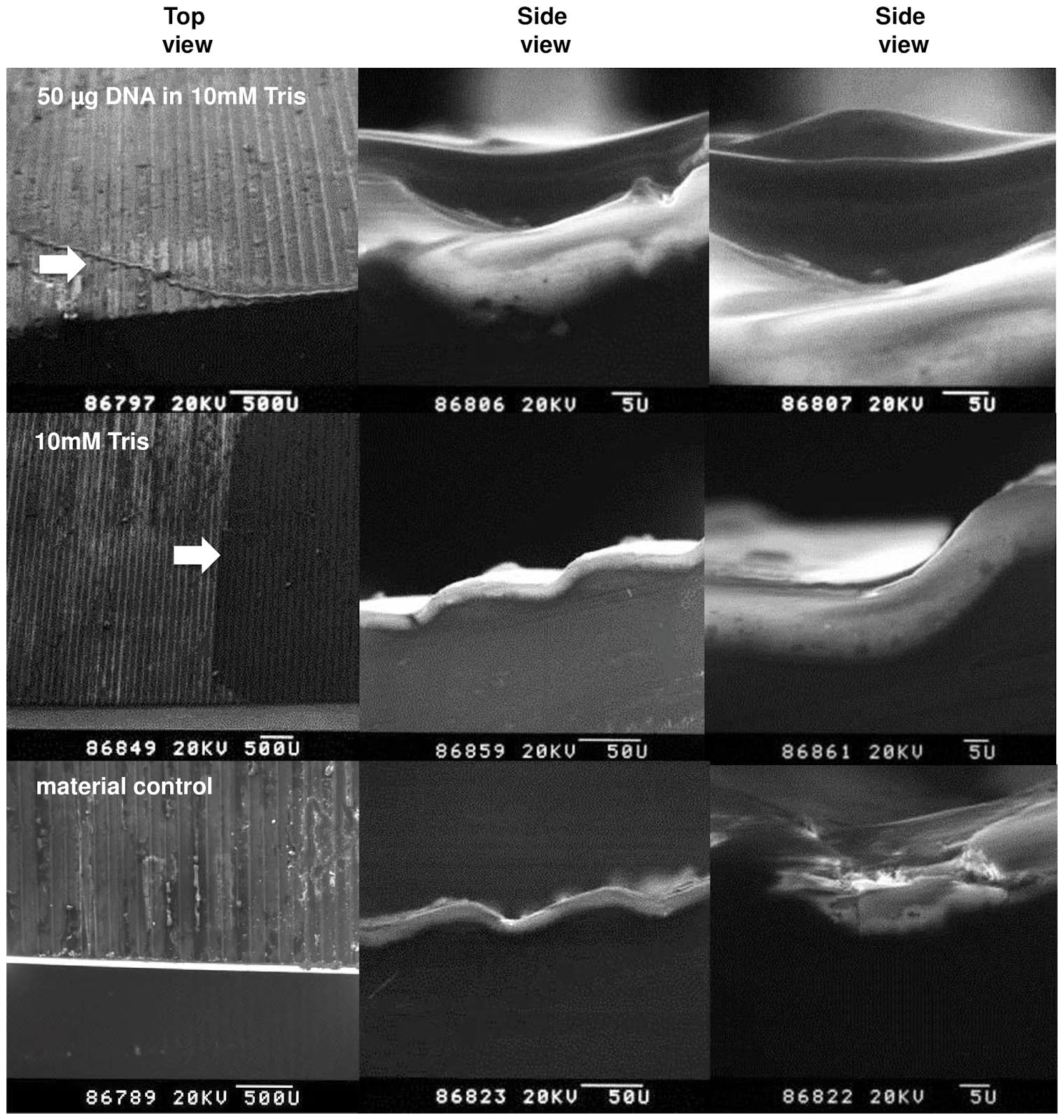
Plasmid DNA attached to the outer surface of a sounding rocket may be able to withstand rocket launch, a period of residence in suborbital space, re-entry, and landing conditions into the Earth's atmosphere, all the while staying intact and active in its function as carrier of genetic information, according to a paper published November 26, 2014 in the open-access journal PLOS ONE by Cora Thiel and Oliver Ullrich from University of Zurich (UZH) and colleagues. Applied to the outer shell of the payload section of a rocket using pipettes, small, double-stranded DNA molecules flew into space from Earth and back again. After the launch, space flight, re-entry into Earth’s atmosphere and landing, the so-called plasmid DNA molecules were still found on all the application points on the rocket from the TEXUS-49 mission. And this was not the only surprise: For the most part, the DNA salvaged was even still able to transfer genetic information to bacterial and connective tissue cells. “This study provides experimental evidence that the DNA’s genetic information is essentially capable of surviving the extreme conditions of space and the re-entry into Earth’s dense atmosphere,” says study head Professor Oliver Ullrich from the University of Zurich’s Institute of Anatomy.
The experiment called DARE (DNA atmospheric re-entry experiment) resulted from a spontaneous idea: UZH scientists Dr. Cora Thiel and Professor Ullrich were conducting experiments on the TEXUS-49 mission to study the role of gravity in the regulation of gene expression in human cells using remote-controlled hardware inside the rocket’s payload. During the mission preparations, they began to wonder whether the outer structure of the rocket might also be suitable for stability tests on so-called biosignatures. “Biosignatures are molecules that can prove the existence of past or present extraterrestrial life,” explains Dr. Thiel. And so the two UZH researchers launched a small second mission at the European rocket station Esrange in Kiruna, north of the Arctic Circle.
 |
| Launch of the rocket TEXUS-49 from the Esrange Space Center in Kiruna, North Sweden. Image: Adrian Mettauer |
Researchers analyzed the samples immediately after the flight, and the results showed that DNA survives to varying degrees in all cases, and in particular, even after application of temporary heating up to 1000°C. Subsequent analyses showed that DNA could be recovered from all application sites on the exterior of the rocket, with a maximum of 53% in the grooves of the screw heads. Up to 35% of DNA retained its full biological function, as shown by its ability to successfully confer antibiotic resistance to bacteria, and to drive expression of a fluorescent marker in eukaryotic cells. The authors suggest this experimental design may establish a robust and universal functionality assay to test for the stability of DNA during an atmospheric transit and re-entry, as well as a model for nucleic acids that could serve as biomarkers in the search for past or present extraterrestrial life.
The quickly conceived additional experiment was originally supposed to be a pretest to check the stability of biomarkers during spaceflight and re-entry into the atmosphere. Dr. Thiel did not expect the results it produced: “We were completely surprised to find so much intact and functionally active DNA.” The study reveals that genetic information from the DNA can essentially withstand the most extreme conditions.Various scientists believe that DNA could certainly reach us from outer space as Earth is not insulated: in extraterrestrial material made of dust and meteorites, for instance, around 100 tons of which hits our planet every day.
This extraordinary stability of DNA under space conditions also needs to be factored into the interpretion of results in the search for extraterrestrial life: “The results show that it is by no means unlikely that, despite all the safety precautions, space ships could also carry terrestrial DNA to their landing site. We need to have this under control in the search for extraterrestrial life,” points out Ullrich.
Organic compounds are very powerful biomarkers, especially those whose structures show long- term preservation. Biomarkers, usually made of complex organic compounds are e.g. macromolecules like proteins as well as nucleic acids like DNA and RNA which represent the essential basis in all living organisms on Earth.
"In our experiment we could show that sounding rockets are an ideal platform to study the impact of high velocity atmospheric passage combined with short term microgravity, UV, and high temperature exposure," the paper reads. "We demonstrated stability and functional activity of DNA during hypervelocity atmospheric transit. This platform-biological-assay combination should be extensively used to investigate the influence of atmospheric passage conditions and short term microgravity on further biomarkers, as well as on different microorganisms, including extremophiles."
It is conceivable that life exists independently from our planet even under the very hostile conditions prevailing on our neighbours like e.g. Mars, since already on Earth we are able to identify some extreme life forms which can survive physically and or geochemically harsh conditions, such as very high or low temperatures, intense radiation, pressure, vacuum, desiccation, salinity, and pH. Many of these parameters also prevail in space and therefore the question is whether terrestrial organisms are able to survive a voyage through space.




.png)


Comments